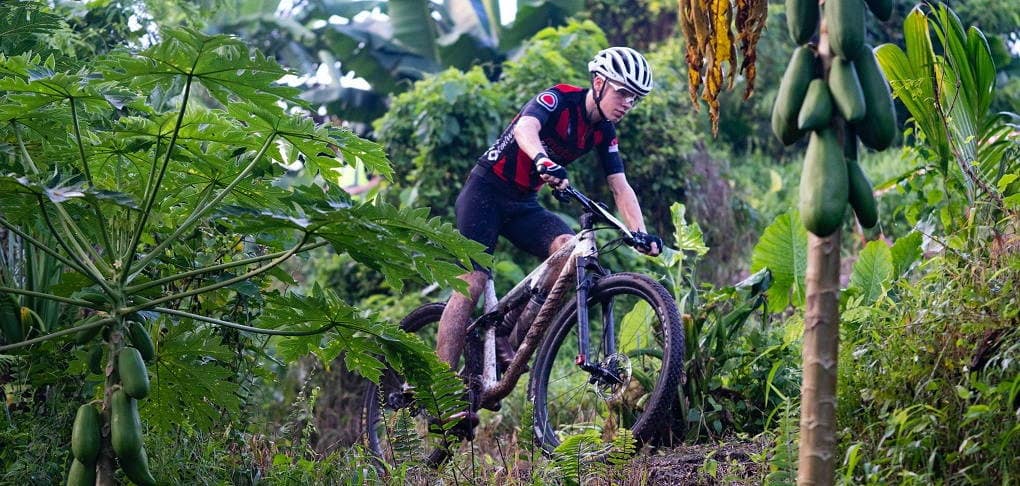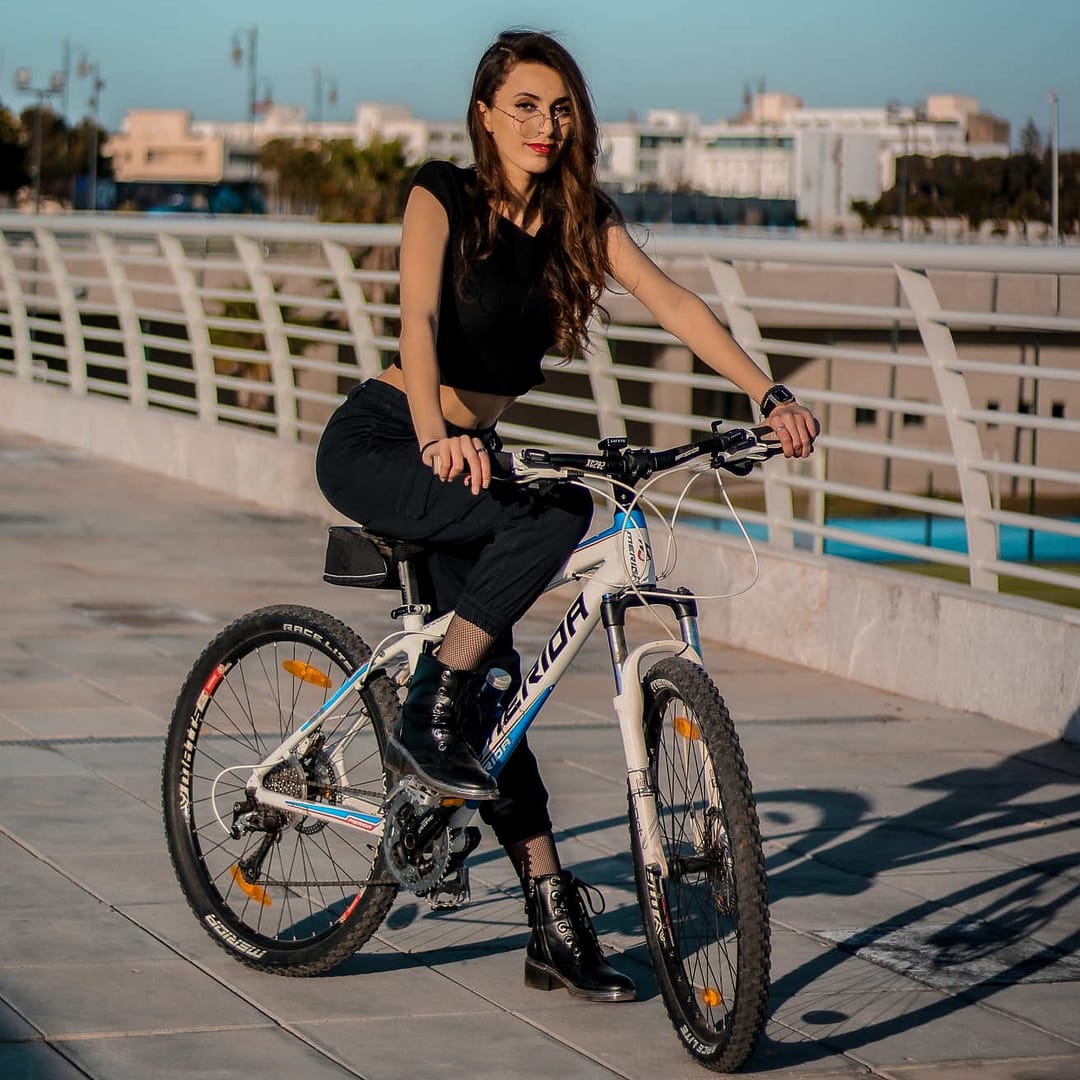Mountain biking is booming, but it’s a big investment for many. Do you want to buy an E-MTB? Then here, we provide the most important answers to typical questions and valuable advice on all aspects of purchasing an e-mountain bike.
What is an E-MTB?
An electric mountain bicycle is a mountain bike in which an integrated motor supports the rider’s power. The engine only works when the rider pedals. The strength of the support can be adjusted at different levels. At the highest level, some drives quadruple the rider’s power. The approval ends at a speed of 25 km/h – beyond that, you pedal without motor support.

Fully or hardtail?
What distinguishes a hardtail e-mountain bike?
An e-MTB with a rigid rear end, without damping or suspension on the rear wheel, is called a hardtail. These are characterized by maximum power transmission and are exceptionally lightweight compared to a Fully. The lack of suspension also makes it cheaper to purchase and also requires less maintenance in terms of the lack of bearing points on the rear wheel.
Due to the stiff frame, however, a hardtail e-MTB is not so suitable for particularly rough terrain and is therefore designed more for forest trails or endurance sports.
What distinguishes a full-suspension e-mountain bike?
As expected, the Fully is somewhat more expensive and heavier than the Hardtail, but otherwise offers only advantages! Unlike the Hardtail, the full is not only suspended on the front wheel but also on the rear wheel. Thus, it provides the driver maximum riding comfort, even on steep descents or stony paths, as it absorbs shocks better and thus provides relief for the back.
It also has the advantage of better transferring the electric motor’s power to the ground, as the full-suspension frame offers significantly more traction. As a result, significantly higher speeds are possible than with the Hardtail, which is also associated with more excellent riding fun.
Rear-drive motor or mid-drive motor, which one is better?
What are the advantages of a rear drive?
Especially on moderately demanding trails and well-paved paths, the rear-drive is recommended on the e-MTB, mainly installed on hardtails. However, the unbalanced weight distribution makes riding heavy trails very difficult.
The significant advantage is that rear-wheel-drive e-MTBs often have recovery, which uses the electric motor to charge the battery while riding and thus extend the range. Therefore, they are usually cheaper and cause minor wear and tear.
What are the advantages of a mid-drive motor?
Nowadays, it is impossible to imagine e-mountain bikes without mid-mounted motors, as they offer significant advantages in terms of handling. The better weight distribution makes it possible to ride on winding trails and offers significantly more safety on steep passages. In addition, a mid-mounted motor always means a combination of gearbox and engine directly at the bottom bracket, whereby the efficiency is enormous because the motor support can be optimally adjusted to the pedaling behavior of the driver.
Especially in a Fully, the mid-motor offers the advantage of being part of the suspended mass, unlike the rear motor. In addition, almost all manufacturers of e-MTBs integrate the drive unit into the frame so that it appears to be fused with the e-MTB and is well protected from below.
How many inches should the wheels have on an E-MTB?
24-inch wheels
The e-MTB range recently offered products for the very small mountain bikers. The wheel size 24″ is therefore only attached to children & youth e-MTBs.
26-inch wheels
The formerly overall wheel size is almost only found on fat bikes, compensating for the smaller wheel diameter with the giant shell.
27.5-inch wheels
Among the smaller wheels on an e-mountain bike are the 27.5″ wheels, which are more maneuverable and accelerate faster than the larger 29″ wheels. When choosing a tire size, you should look at the big picture, as it depends on suspension travel and personal riding needs.
29-inch wheels
The large wheels are particularly well suited for very uneven terrain, as they can absorb height differences better than small wheels and are therefore ideal for e-MTBs with short suspension travel. In addition, they have higher traction and smoothness.
The wheel size on mountain bikes is specified in inches. Common is 27.5″ and 29″, with the larger size dominating the market. Why? A 29″ wheel is slowed down less than a smaller wheel when rolling over an obstacle and rides more stably and safely. In addition, once accelerated, it maintains speed better. Smaller 27.5″ wheels, on the other hand, are more agile, making handling more nimble.
Some electric bike manufacturers combine the two-wheel sizes: front 29″ for top track stability, but rear 27.5″ (with extra-wide tires) for high traction.
How do I find the correct frame size for my e-mountain bike?
The right frame size:
Frame size body size
XS / 14-15” <160 cm
S / 16-17” 160-170cm
M / 18-19” 170-180cm
L / 20-21” 180-190cm
XL / 22-23” >190cm
For a long time, the seat tube length was considered “the measure of all things” for size determination in the MTB sector. Since the seat height is primarily adjusted via (long) Vario seat posts, the value has lost importance – especially since most manufacturers try to draw the seat tube as short as possible. The top tube length is no longer as crucial for sizing. The “seat length” is regulated more via the stem. Instead, the so-called Reach value says more about the length of the front frame triangle. The longer the reach, the better you are usually integrated into the bike. However, very long-reach values often require acclimation or an experienced hand. But how do you find the right size now?
Almost all manufacturers no longer specify this in centimeters or inches but use “T-shirt sizes” from XXS to XXL, with the selection of most E-MTBs limited to four sizes. And indeed: If you are “normally built” and choose your clothing size, you will also usually find the right E-MTB. Many manufacturers also offer sophisticated “size finders” on their websites. And the trained specialist dealer will also help you find the right size.
What is the range of an e-mountain bike?
The range of e-mountain bikes are strongly influenced by the battery capacity, the selected support level, the rider’s weight, the route profile, the riding behavior, and several other factors. Therefore, it is impossible to make a general statement about the range based on the battery capacity alone. It can vary between 10 km (under full load, with maximum assistance, permanently uphill) and over 100 km with moderate help. Important: The battery capacity must also never be considered in isolation but always in correlation with the (maximum) power of the motor.
What should you look for in a battery?
You will find the battery of an e-bike either built into the carrier, mounted on the frame, or integrated into the frame, whereby the integrated batteries . They are not visually noticeable, are protected from external influences by the tube, and have less impact on the center of gravity of the bike and thus the driving characteristics. The range depends on various factors. The battery capacity (usually 400Wh or 500Wh), the battery’s age, the bike’s weight, the quality of the storm, and the motor play a role. However, since factors such as headwind, selected support level, or slopes influence the range, the manufacturers can only give approximate information. Therefore, try to compare not only the stated range but also the total weight of the e-bike, the motor, and of course, the adequate battery capacity in your decision.
The aluminum frame or carbon frame – Which is better?
The frame material is primarily a question of your budget. So far, carbon e-mountain bikes are, on average, over $1000 more expensive than comparable aluminum models. The advantages that a carbon frame offers in terms of riding performance are relatively small. A reasonable carbon frame can save about 500-600 g in weight and be stiffer, but the importance is not as crucial for e-mountain bikes as conventional bikes due to the motor assistance. Nevertheless, carbon gives manufacturers more freedom in frame design and allows for a more beautiful, integrated design language. The decision to buy a carbon e-mountain bike is, therefore, currently primarily an emotional one.
How many gears does an E-MTB need?
The days when mountain bikes had 27 or even 30 gears are long gone. Modern bikes with and without electric assistance have only one chainring at the front and rely on gears with 8 to 12 speeds, which cover a similar range to those of the older generation of mountain bikes, shift better, and are less prone to errors. If the cassette range is too small, it lacks easy climbing gear on steep or technical climbs.
Important terms to know before buying:
Battery power
The battery capacity is specified in watt-hours (Wh). Depending on the bike, it varies from 250 Wh to over 1,000 Wh.
Motor power
The motor power is specified in watts (W) for e-bikes. The average motor power is set by law at 250 W for pedelecs. In the short term, however, all motors achieve higher capacity.
Torque
Torque, measured in Newton-meters (Nm), describes the rotational force with which a motor supports the biker when pedaling. The higher the torque, the stronger the support.
Wheel size
27.5″, 29″ or a mix of 29″ front and 27.5″ rear are the three standard wheel sizes for E-MTBs.
Suspension travel
Like a car, an e-mountain bike also has a suspension system to absorb shocks. The suspension travel varies between 100 mm and 200 mm depending on the intended use and model.
Gear ratio range
The gear ratio bandwidth of the gearshift is measured in percent. The larger the bandwidth, the more significant the difference between the smallest and largest gear. A bandwidth of 500% is ideal.
Test drive – Does it have to be?
Absolutely! An e-bike costs a lot of money, so you want to buy one that you’ll enjoy for many years, right? You can only find out if the bike is comfortable and fits well to your anatomy or requirements if you have at least sat on it once.
Can you buy used E-MTBs with no worries?
With a bit of planning and caution, buying used is no problem. The most important criterion, because it is usually the most expensive spare part on the e-bike, is the battery: you can have it checked for functionality and condition at the specialist dealer together with the motor – usually for a small donation of coffee money. Even a defect does not have to be a deterrent but can, of course, be expensive. Once the battery issue has been resolved, you should focus on the other add-on parts and the rest of the history. It is recommended to search only on reputable platforms, pick up the bike locally, or insist on buyer protection.
How much does a good e-mountain bike cost?
A reliable, full-suspension e-mountain bike for trail use costs at least $500 to $2000, depending on the electric bike manufacturer – except for special offers. With cheaper bikes, savings are usually made on the equipment, the motor, the frame, or the quality in general. This results in poorer driving performance and often also significantly lower durability. You will learn what you have to look out for in detail and which is the best bike in this price segment in our budget comparison test.





